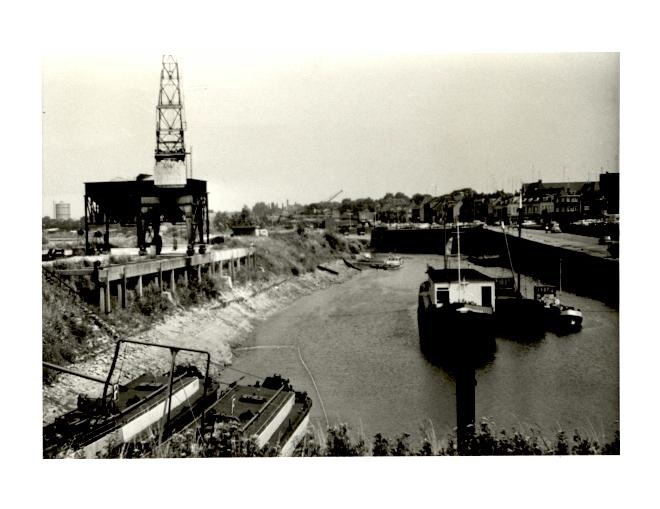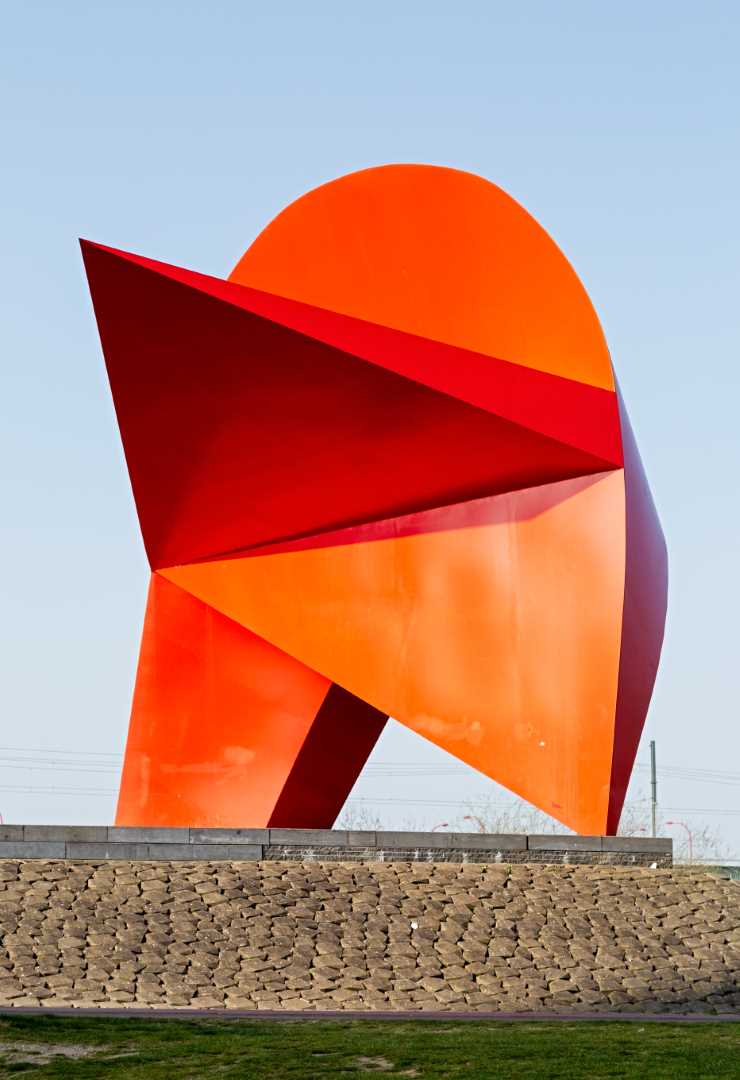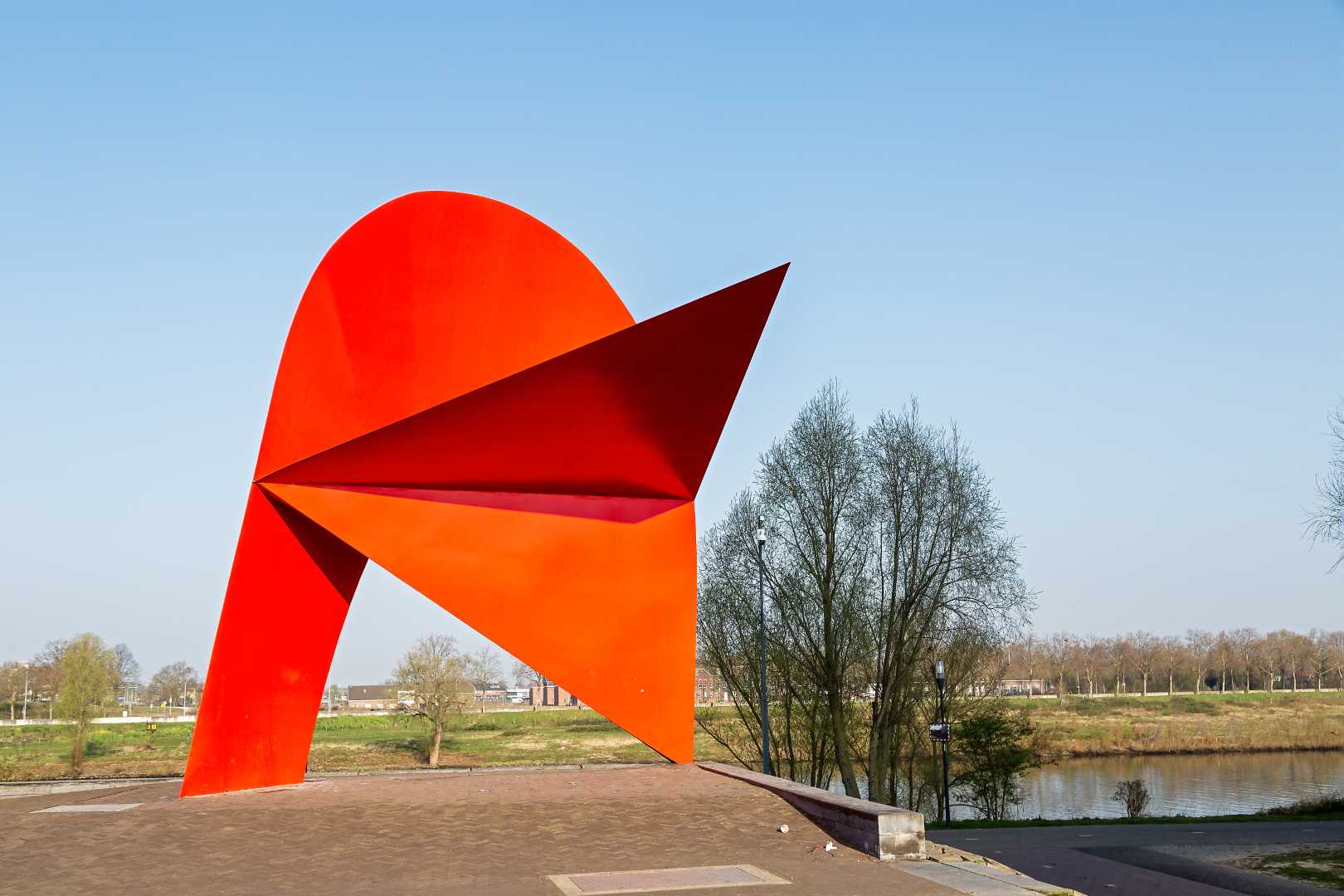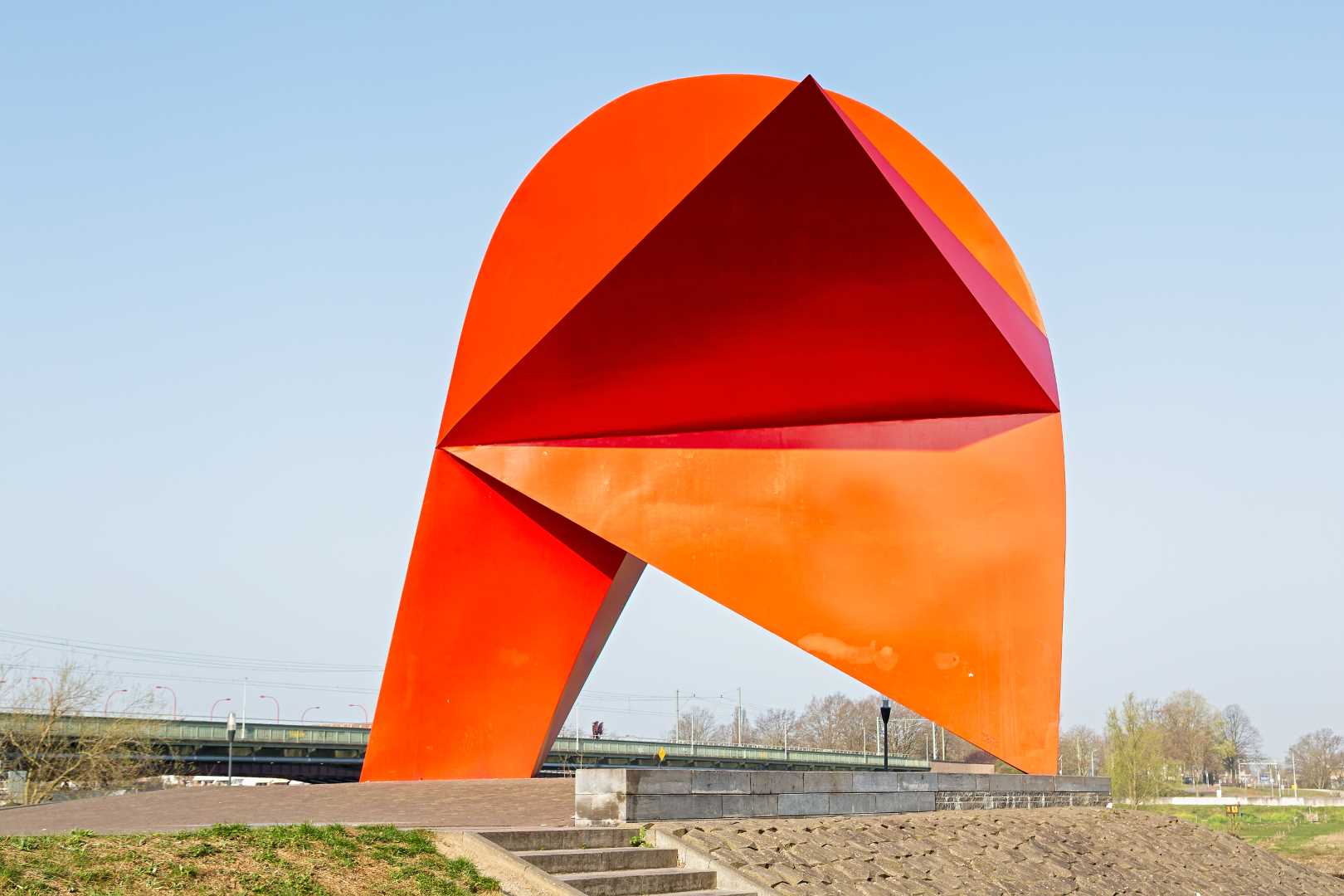Tango
Prinsessesingel
Tango – Fons Schobbers
Tango is a bright red sculpture; made of steel, ten metres high and weighing 24 tonnes. The red is symbolic for the passion of a tango dance that is depicted by the artwork. The tangents of the sculpture on the floor are like a tango pass. The tensions as during the dance itself, attracting and repelling… Simple at first sight, but at the same time Tango continues to surprise the viewer. Partly because the sculpture looks different from different points of view.
Tango, commissioned by the Scheuten Foundation, the Municipality of Venlo and the Province of Limburg, consists of two parts, a U-shape and a sharp point. Both parts were pushed together on site with the greatest possible precision.
The story of Tango is not complete without mentioning its predecessor on the same spot, Sphinx. Also a work of art by Fons Schobbers, consisting of 6,000 unique glass plates, each 10 mm thick,layer upon layer. The plates were attached to each other with a self-adhesive UV-resistant film that was specially designed for this purpose.
Placed in October 2013, it was meant to be a metaphorical protector of the city, just like the Watchmen and the Warrior a little further away. The sculpture would not fulfil this function for long, as cracks began to appear in it after only a few weeks, as a result of the working of the glass. A few months later, Sphinx was demolished for safety reasons. By a large crane with a chisel point, similar to the pointy element in Tango. Thus the memory of Sphinx remains.
The Artist: Fons Schobbers
Fons Schobbers (Venlo, 1947) began his career as an independent artist in 1974. Since 1982, Schobbers and his wife Liesbeth have lived and worked in a large part of the former Mariadal convent in Venlo. They put a lot of time into restoring and converting the chapel into a studio and home. New work is regularly presented in the outdoor chapel.
Schobbers is inspired by artists such as Moore, Brancusie, Arp, Calder and Kapoor, creators of monumentally large works, something that is also Schobbers’ ambition: “In monumental formats you often see the real power of a sculpture.”
The harbour area
Tango is located in the Venlo harbour area, nowadays called Maasboulevard. Now a place for recreation, it used to be important for the Venlo economy, just like the river Maas itself. Already in the Middle Ages, Venlo was a transhipment place for goods. For a long time, loading and unloading took place at the Maaskade located further along, at the level of Bolwaterstraat. After the Zuid-Willemsvaart was opened in 1828, shipping on the Meuse suffered a setback. To give this a boost, in 1837 a start was made on the harbour, the contours of which are still visible today. In 1904, it was decided to construct a new landing stage with both a low and a high quay so that barges could be unloaded at any water level.
Even after the Second World War, the city harbour was still in use for several decades. This changed with the arrival of the industrial estates around the city and the industrial harbour that was constructed there. The area had been in a state of disrepair since the 1970s, until the plans for the Maasboulevard, which were first drawn up in the 1990s, were implemented. In September 2011, the area was officially opened. After its transformation, the area featured a new shopping street, a waterside restaurant, a city park and a small marina.

The old harbour in 1969, on the left the Kop van de Weerd (Photo: Venlo Municipal Archives)



